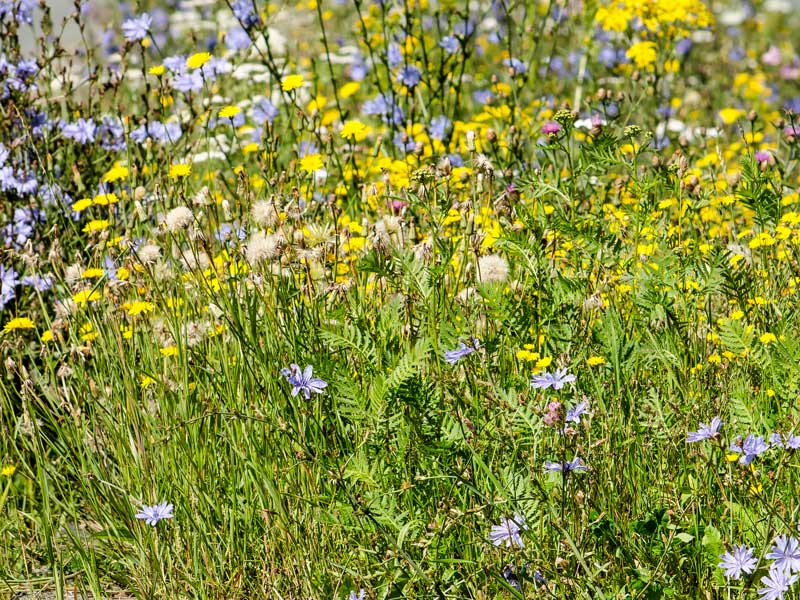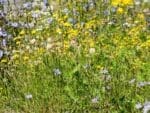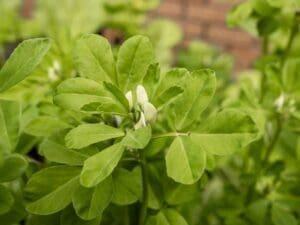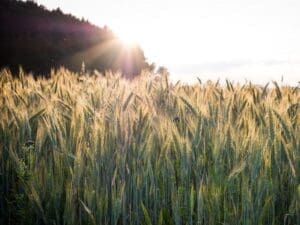GREEN MANURE Winter Pollinator Seed Mix
Our Winter Pollinator Seed Mix is a diverse blend of legumes, grains, and deep-rooted herbs designed to enrich soil and attract beneficial insects through the cooler months. Therefore, this mix improves fertility by fixing nitrogen, adds organic matter, and enhances soil structure. When left to flower, it supports bees and other pollinators, making it ideal for orchards, market gardens, vineyards, or broadacre systems in temperate and subtropical zones.
- Fixes nitrogen with legumes such as clovers, lucerne, vetch, and field peas.
- Deep-rooted species like lucerne, plantain and chicory break up compacted soils and improve water infiltration.
- Provides excellent ground cover to suppress weeds and prevent erosion during winter.
- Encourages biodiversity with pollinator-attracting flowers like crimson clover and chicory.
- Improves microbial life and organic content in fallow beds or between crop rotations.
Plant Details:
- Plant Type: Cool-season annual and short-term perennial green manure and insectary cover crop mix
- Coverage: Approx. 1000 m² per kg (broadcast)
Sowing Information:
- Sow When:
Temperate Regions: February–June or August–October
Subtropical Regions: March–June - Germination: 7–14 days (depending on soil moisture and temperature)
- Depth: Sow 1–2 cm deep
- Position: Full sun to part shade
- Sow Where: Broadcast into prepared beds, paddocks, orchard rows, or vineyard understories
- Soil Type: Adapts to most soils; thrives in well-drained soil with pH 6.0–7.5
- Spacing: Broadcast evenly or sow in bands 15–30 cm apart
Management:
- Keep soil moist through establishment, especially in dry spells.
- Cut or mow before peak flowering to maximise nutrient return and avoid reseeding.
Harvest and Incorporation:
Incorporate the mix into soil 2–3 weeks before planting your spring crops. In no-dig systems, chop and leave in place as a nutrient-rich mulch that feeds soil biology and helps retain moisture.
When to Sow Winter Pollinator Seed Mix in Your Climate
| Climate Zone | Best Planting Time | Tips |
|---|---|---|
| Temperate | February–June or August–October | Sow at the end of summer or early spring for cool-season cover and pollinator support. |
| Subtropical | March–June | Plant early in the dry season to allow good establishment before winter chill. |
| Tropical | Not recommended | Best suited to cooler climates. Use tropical mixes instead for summer green manure. |
| Cool | February–April | Sow after peak summer heat and before the coldest part of winter. |
| Arid | March–May | Establish with irrigation and mulch to retain moisture in dry periods. |
Quick Growing Guide
| Aspect | Details |
|---|---|
| Germination Time | 7–14 days |
| Sowing Depth | 1–2 cm |
| Watering | Keep moist during establishment; mulch can assist in dry periods. |
| Growth Period | 6–10 weeks before cutting or incorporating |
| Incorporation | Chop and dig in 2–3 weeks before planting your spring crop. In no-dig systems, leave cuttings as mulch. |




